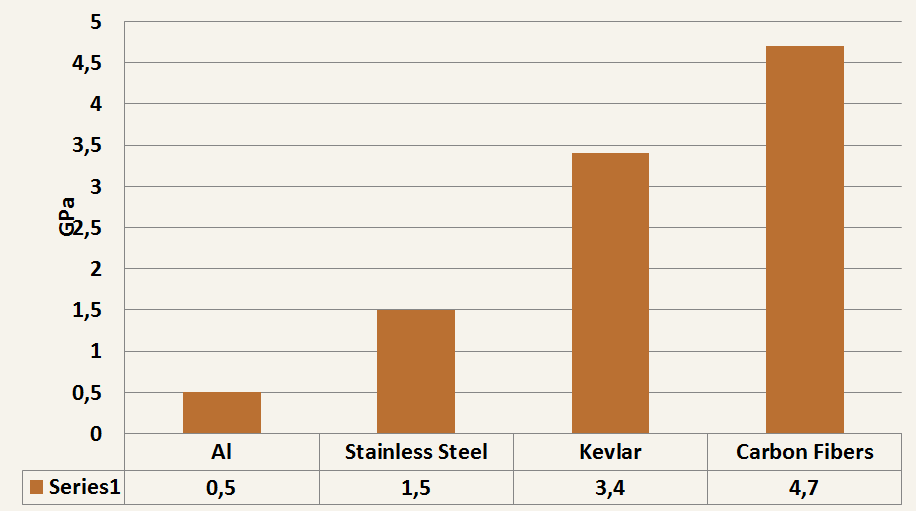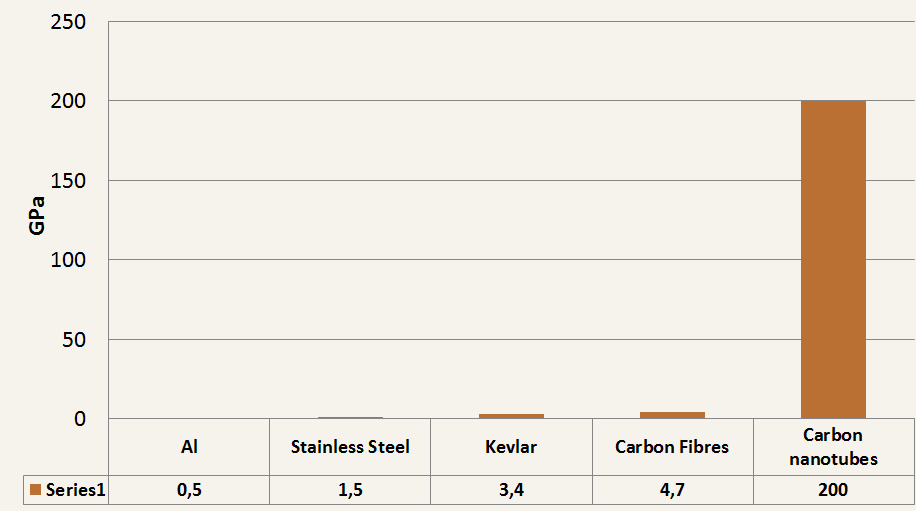Why Carbon Nanotubes?
CNT can change the properties of 70% all materials.
|
Modulus |
Tensile Strength |
Thermal conductivity | |||
| Al | 70 GPa | 0,5 GPa | 240 W/(mxK) | ||
| Steel | 200 GPa | 1,5 GPa | 400 W/(mxK) | ||
| пёп²п╒ | 1000 GPa | 200 GPa | 4000 W/(mxK) | ||
Tensile strength of egineering materials, GPa.


At the moment the introduction of CNS in metals is possible only in the field of powder metallurgy, thus there is a significant rise in production. Powder metallurgy is not more than 4% of the world market of metal products.
Challenges to the introduction of CNT in the metal melt:
• High chemical inertness of carbon nanotubes
• Low wettability of CNT with metal
• The low thermal stability of CNT
Developed a unique technology that allows to enter CNT directly into the molten metal.
We use a unique method of preparing carbon nanotubes, this method allows significantly improve the properties of modified metals.
Snapshots of the electron microscope: carbon nanotubes modified by technology owned by company's Carbon tech, LLC. CNT introduced directly into the molten aluminum.
The results testing sample of the modified copper (tensile):
|
Options |
Purecopper |
6006* | 6004* | 6008 |
|
Diameter of the samples, п╪п╪ |
8 | 8 | 8 | 8 |
|
Diameter of the samples after testing, п╪п╪ |
7,67 | 6,4 | 7,31 | 2,2 |
|
Modulusof elasticity, GPa |
84 | 83 | 132 | 70 |
|
Maximum load, kgs |
448,4 | 669,2 |
542,9 |
699,3 |
|
Tensile strength, MPa |
87,5 |
130,6 |
105,9 |
136,5 |
|
Yieldstrength, MPa |
50,3 |
40,4 |
59,1 |
48,8 |
|
Proportional limit, MPa |
35,9 |
30,6 |
42,5 |
33,1 |
|
Elongation at break,% |
8,33 |
36,6 |
11,0 |
46,3 |
|
Narrowing at break,% |
8,1 |
36 |
16,5 |
92,4 |
* Samples6006, 6004 and 6008 have different properties due to the different concentration of the modifier.
The results testing sample of the modified aluminum:
|
Б└√ ofsamples |
Modifier type |
CNT concentration, % |
Tensile strength, MPa |
Elongation at break, % |
| 4 |
SWCNT |
0,03* |
71,76 |
30,62 |
| 5 |
SWCNT |
0,12 |
65,99 |
18,22 |
| 6 |
SWCNT |
0,3 |
56,72 |
12,12 |
| 7 |
MWCNT |
0,03 |
62,73 |
16,53 |
| 8 |
MWCNT |
0,12 |
56,14 |
13,36 |
| 9 |
MWCNT |
0,3 |
48,67 |
9,33 |
| 10 |
Controlsample |
- |
37,99 |
5,08 |
*The best result was shown by the sample with the lowest concentration of CNT

 EN
EN  RU
RU  CN
CN 





